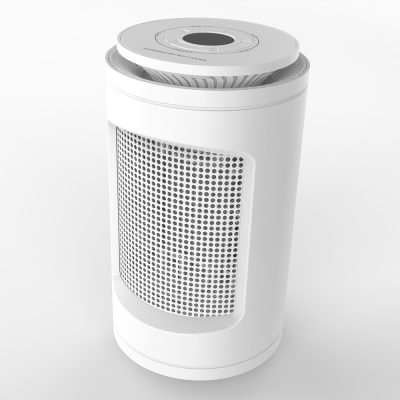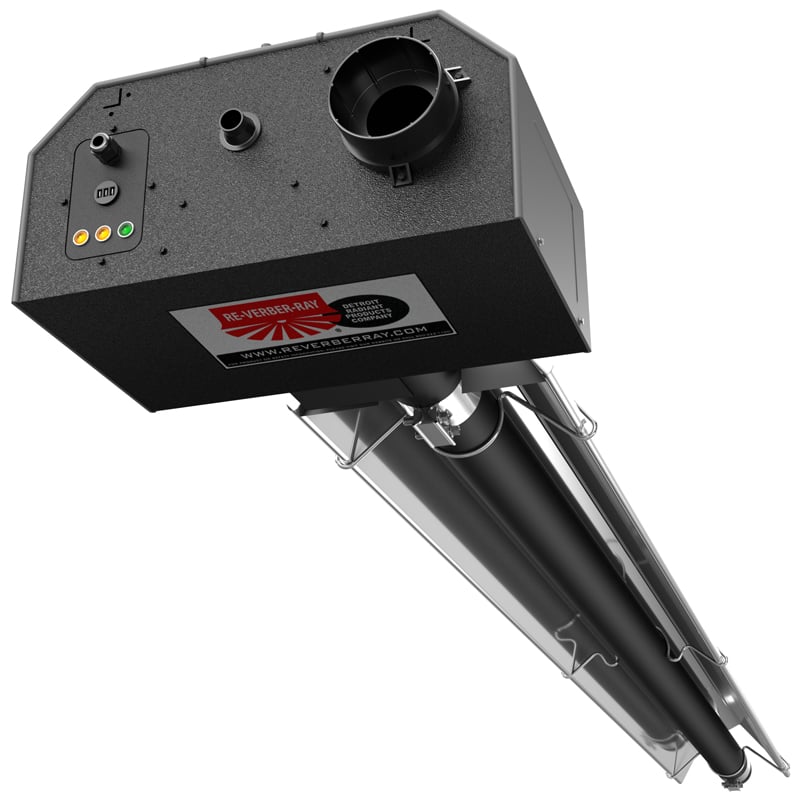

Infrared heaters are becoming increasingly popular as a heating solution, offering a unique approach to warming spaces. They work by emitting infrared radiation, which directly heats objects and people, unlike traditional convection heaters. This difference can lead to considerable advantages in energy efficiency and cost savings. However, not all heating solutions are created equal, and the choice of which heating method is best for your home depends on a range of factors. This article delves into the advantages and disadvantages of infrared heaters, comparing them to other common heating types like convection, electric, and gas heaters, to help you make an informed decision. We’ll explore their effectiveness in various settings, along with cost analysis and safety considerations.
Understanding Infrared Heating
The Science Behind Infrared Heaters
Infrared heaters operate on the principle of electromagnetic radiation. Instead of heating the air, they directly heat objects and people within their range. This method of heat transfer is different from traditional convection heaters, which warm the air and then circulate it around a room. This fundamental difference impacts the efficiency and cost-effectiveness of infrared heating, as it significantly reduces energy loss.
Key Differences from Other Heating Methods
Infrared heating is distinct from convection, electric, and gas heating methods. Convection heating relies on heated air circulating through a room. Electric heaters, while common, typically utilize resistance heating elements to warm the surrounding air. Gas heaters use combustion to produce heat and circulate it via air currents. Infrared technology, conversely, heats objects and people directly via radiation, which can yield improved efficiency in certain conditions. Consider the specific needs of your space to determine the most appropriate heating solution.
Energy Efficiency and Cost Savings
Comparing Energy Consumption
Infrared heaters often boast higher energy efficiency compared to conventional systems like convection heaters. They target heat directly at the area needing warmth, minimizing the loss of energy to heating the entire surrounding air. This focused approach can significantly reduce energy consumption and lower your utility bills, particularly in areas with large temperature fluctuations or less insulation. Studies show a potential for energy savings of 10-30% when replacing conventional heating systems with infrared systems in suitable settings.
Long-Term Cost Analysis
While upfront costs might seem higher, the long-term energy savings potential of infrared heaters can make them a financially viable choice. Factor in the potential savings, the efficiency, and the targeted heat delivery, and you will see the advantages.
Safety and Performance Considerations
Safety Features and Considerations
Infrared heaters are generally considered safe when properly installed and maintained. However, potential safety issues can arise if guidelines are not followed. They’re generally safer than open flame gas heaters, avoiding fire hazards associated with combustion. Always adhere to manufacturer instructions and ensure proper ventilation. Use caution around flammable materials or children in the area. Infrared heaters offer a safer alternative in certain situations.
Performance in Different Environments
Infrared heaters perform well in specific environments. They are particularly effective in garages, workshops, or sunrooms, where quick heating and focused warmth are beneficial. They’re less effective for spaces with high ceilings or rooms lacking insulation, due to the ability of the radiated heat to escape. Consider the surrounding environment and the necessary amount of heat required to determine whether an infrared heater is a suitable option.
Installation and Maintenance
Installation Procedures
Installation of infrared heaters varies depending on the type of heater and the particular location. Some require professional installation, while others can be installed by homeowners with basic DIY skills. Always consult the manufacturer’s guidelines for the specific instructions. Ensure the chosen heater’s wattage aligns with the area’s needs.
Maintenance Best Practices
Maintenance of infrared heaters is usually quite straightforward. Regular cleaning and inspection are crucial to ensure optimal performance. Wipe down the surface regularly, avoid placing any heavy objects on it, and inspect for any physical damage. Adhering to proper maintenance can extend the lifespan and efficacy of the heater.
Comparison with Alternative Heating Systems
Convection Heaters
Convection heaters work by heating the surrounding air, which then circulates throughout the room. While simple and cost-effective, convection heaters tend to have lower energy efficiency than infrared heaters. Energy loss during air circulation is a significant factor affecting efficiency. Infrared heaters offer a more targeted and efficient method for space heating.
Electric Space Heaters
Electric space heaters are another popular choice. However, they typically have lower energy efficiency compared to infrared options due to their primarily air-heating nature. Infrared heaters, on the other hand, provide direct heat to the desired area, leading to potential energy savings. This efficiency difference can be significant, especially in well-insulated environments.
Cost Considerations and Value
Initial Investment Costs
Initial investment costs for infrared heaters can vary significantly based on the wattage, size, and features of the chosen model. It’s essential to weigh the upfront cost against the potential long-term energy savings, considering the specific heating needs of the space.
Return on Investment
The return on investment for an infrared heater depends on the specific energy consumption in the particular space. In many cases, the improved energy efficiency will outweigh the higher initial cost, particularly in environments with higher energy bills or lower insulation. Analyze specific energy costs for your region and evaluate the anticipated savings when making your decision.
Environmental Impact
Energy Savings and Emissions
Infrared heaters can contribute to energy savings, which in turn has positive implications for the environment. Decreased energy consumption from traditional heating methods can lower greenhouse gas emissions. The overall environmental impact depends on the energy source powering the heater and the specific energy consumption profile of your area.
Sustainability and Green Living
Implementing infrared heaters can be part of a broader approach to sustainable living. By reducing energy consumption, you contribute to a more environmentally conscious approach. Assess and weigh these factors before making a choice.
Installation Considerations
Compatibility with Different Building Types
The suitability of infrared heaters depends on the type of structure and the existing heating system. In some instances, an existing system might benefit from an infrared supplemental heating system. Consult with a professional installer to ensure compatibility and proper integration into the home or business structure.
Choosing the Right Wattage for the Room
Selecting the appropriate wattage for the space is crucial. A heater with too low a wattage might not provide enough heat in large spaces, and vice-versa. Consulting professional advice for wattage requirements will optimize effectiveness and safety.
Emerging Trends and Future Possibilities
Smart Home Integration
Modern infrared heaters are increasingly being integrated with smart home systems. This enables remote control, scheduling, and integration with other smart appliances, improving convenience and energy efficiency.
Advancements in Technology
The future of infrared heaters is promising, with ongoing advancements in materials and design leading to more energy-efficient and user-friendly models. These improvements will make infrared systems more appealing for a wider range of applications in various types of homes.
FAQ
What are some common misconceptions about infrared heaters?
Many believe that infrared heaters are too expensive to run, or that they pose significant safety hazards. However, advancements in technology have resulted in more affordable, efficient, and safer models compared to previous generations. Proper installation and adherence to safety guidelines are crucial for safe and effective usage. Consider factors like wattage, insulation, and room size when assessing heating needs to ensure appropriate safety and energy efficiency.
What are the best applications for infrared heating?
Infrared heaters shine in spaces with specific needs such as garages, workshops, patios, or sunrooms, where quick heating and targeted warmth are beneficial. They also excel in homes with limited space or a need for supplemental heating in specific areas, like porches, patios, or kitchens. Moreover, their ability to provide focused heat can reduce energy loss and result in substantial energy savings. Consult with professionals to assess your specific situation before implementing infrared heating.
How do infrared heaters compare to other radiant heating methods?
Infrared heating delivers heat directly to objects and people, using electromagnetic radiation. This differs from convection heating, which relies on air currents. Although both can provide efficient warmth, the mechanism of heat transfer varies significantly. Infrared heaters, in comparison, tend to heat up objects and people rapidly, and to a focused degree. Factor in the potential benefits and drawbacks, considering cost, efficiency, and installation requirements, to determine the best method for your needs.
In conclusion, infrared heaters offer a unique approach to heating that has advantages and disadvantages compared to other methods. Their efficiency, safety, and space-saving properties make them an attractive option for specific situations. However, factors like cost, installation complexity, and potential drawbacks with certain room types must be weighed. Consider your specific needs and the overall cost of ownership when deciding if an infrared heater is the right choice for you. To learn more or explore other heating options, visit our website. We offer a range of resources to assist you in making an informed decision.